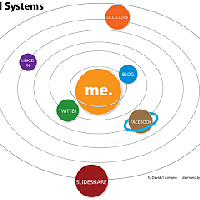Home
About Us
What is the Difference between Getting a Federal Student Loan and a Private Student Loan?
by: Michael SaundersAttending college is a milestone, but can also be extremely expensive. With some options already in mind, you may want to look at the student loan alternatives that are available to a college undergraduate. Student loans can be very tricky, and are very confusing to most. In many situations, families are accepted for all different kind of loans and then are left in the dark when it is time to pay it back or fail to realize that they owe as much due to accrued interest.
|
|
With high interest rates and very unforgiving payment plans, it is best to know what options are available to you prior to being seduced by college lenders with promises of fast money.
You may already be somewhat familiar with the terms ‘Federal Student Loan’ and 'Private Student Loan'; these are the two most popular type student loans being used today. Do not let the terms deceive you, as they do not sound very different, they come with very different stipulations and payment approaches when it comes time to pay the money back. A student loan is anything that is aided to the student or their family from the government or school the student plans to attend. These loans the student will pay back with interest at a later date.
(continued...)
What is the Difference between Getting a Federal Student Loan and a Private Student Loan?
Page 2
About The Author
The author edits a site featuring Grants for Education and another Government Grants site providing info on every grant the federal government offers. Michael Saunders has an MBA from the Stanford Graduate School of Business. |
Additional Resources
category - Education Grants
Financing Your Education - Federal Perkins Loans
ENGAGE: Learning to Solve Problems, Solving Problems to Learn
Learning Disabilities Innovation Hubs Program
Computing Education Grants Program for the 21st Century
Follow @topgovtgrant
Social Entrepreneurship
Spotlight
Social Enterprise Version 2.0

Midsize businesses are tapping into the social business market because large companies do not need the help of start-ups to create a “social technology stack.” But a social business stack cannot generate revenue by itself.
